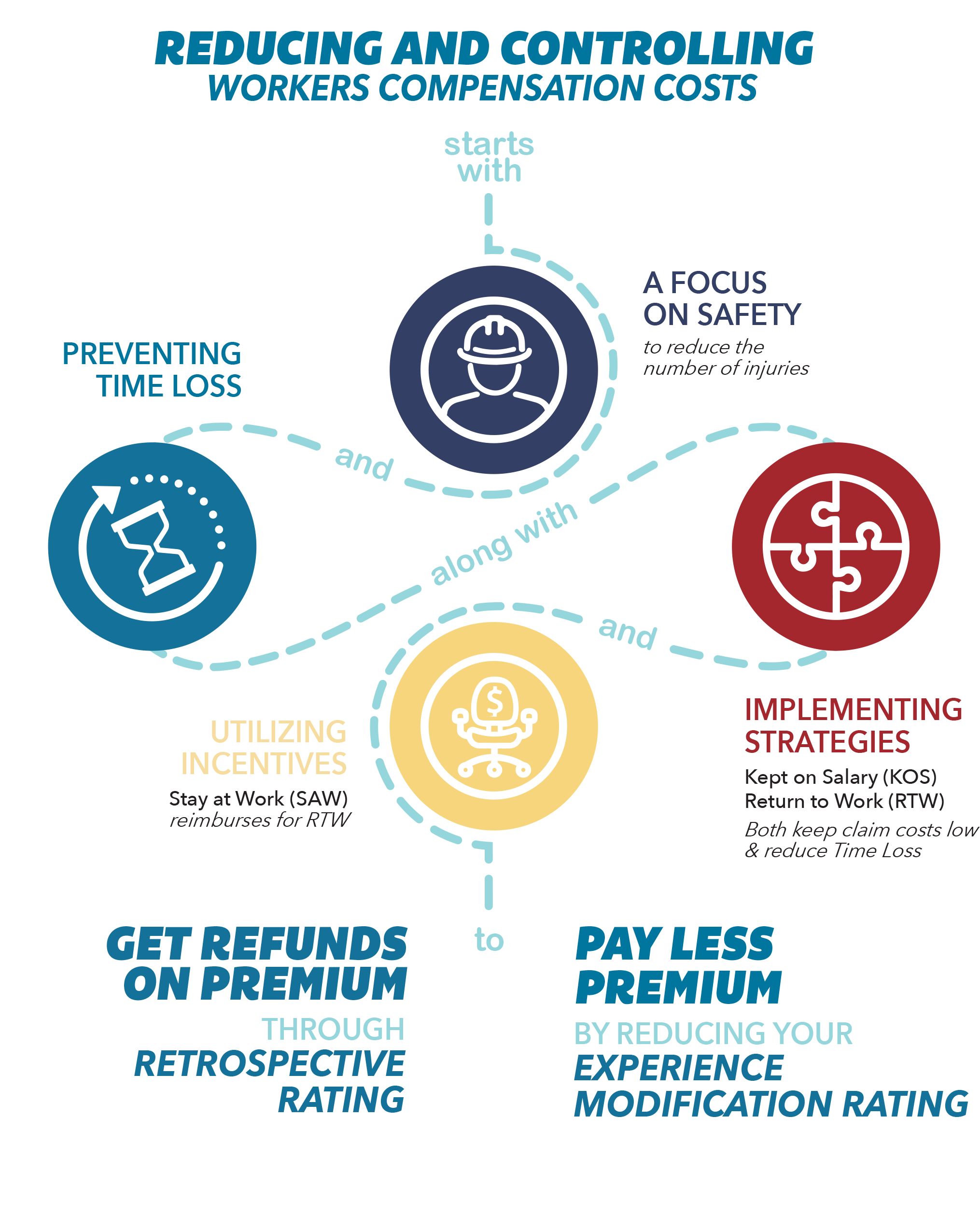Saving Money With GRIP: The Basics
There are many benefits to GRIP participation, saving money not least among them. Program participants often pay lower upfront workers’ compensation premiums to the Department of Labor & Industries (L&I) and receive refunds on the premiums they do pay. To make the most of these opportunities to save with GRIP, participants should have a focus on safety, work to prevent time loss, implement strategies to keep claim costs low, and utilize incentives like Stay at Work (SAW) reimbursements.
A FOCUS ON SAFETY
Safety is a critical goal in its own right, and it’s also important for maximizing the GRIP refund. To support participants’ workplace safety, GRIP provides jobsite visits and gap analyses, phone consultations, group trainings, and safety resources. The collective success of all GRIP participants hinges on everyone working to reduce workplace injuries.
PREVENTING TIME LOSS
In the event that an employee is injured, returning them to work as soon as possible is the single most effective way to cut down on claim costs. Time loss has the potential to be extremely detrimental to a participant’s Retro refund and thus the GRIP group refund. It can seem challenging to avoid time loss and return injured employees to work, but there are several strategies GRP participants can implement.
“To support participants’ workplace safety, GRIP provides jobsite visits and gap analyses, phone consultations, group trainings, and safety resources.”
IMPLEMENTING KOS AND RTW STRATEGIES
Upon enrollment in GRIP, participating companies commit to maintaining a Kept on Salary (KOS) policy and offering Return to Work (RTW). By paying an injured worker their regular pay while out (i.e., keeping them on salary), an employer avoids having L&I pay time-loss benefits and keeps the claim “medical only,” drastically reducing the hit to the refund. (For every $1 paid in time-loss benefits, L&I takes up to $5 out of the potential refund.) To reduce KOS expenses, employers can implement RTW strategies to get injured employees back to work as safely and quickly as possible through modified or light-duty work.
UTILIZING INCENTIVES
Through their Stay at Work (SAW) program, L&I reimburses employers for some of their costs incurred while providing RTW for injured employees, including 50% of the worker’s base wages. GRIP has a program that matches SAW, which means that by providing modified duty for injured workers, employers can be reimbursed for 100% of the employee’s wages.
By keeping these four factors in mind, participants can reduce and control their workers’ compensation costs and save money with GRIP.


